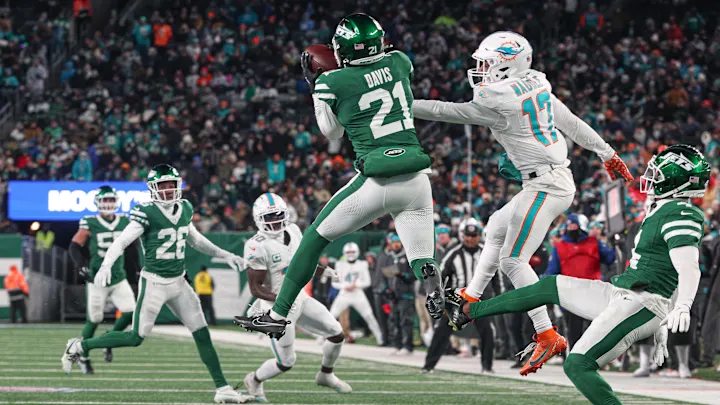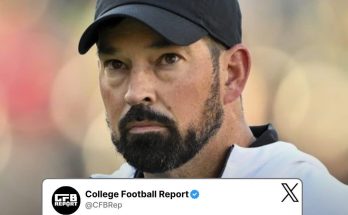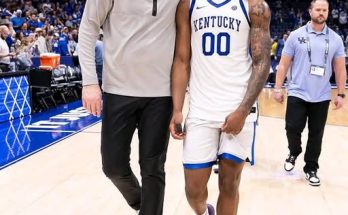How Davis Became a Ball Hawk With the Help of a Former Dolphins Coach
In the world of football, becoming a ball hawk — a player renowned for his ability to intercept passes, force fumbles, and create turnovers — is no small feat. It takes a unique blend of instincts, intelligence, and most importantly, coaching. One such story of transformation is that of a player named Davis, a young defensive back who, under the guidance of a former Miami Dolphins coach, was molded into one of the most feared playmakers in the game.
The Making of a Ball Hawk
To understand how Davis became a ball hawk, it’s important to first understand what being a ball hawk really means. Ball hawks are defensive players who can read the quarterback’s eyes, anticipate passes, and use their hands to snatch interceptions out of the air. They have an innate sense of where the ball is going, often putting themselves in the right position at the right time. But, for every natural instinct, there is a set of coaching principles that helps turn raw talent into elite playmaking ability.
Davis, an unheralded player coming into the league, wasn’t always a natural at reading the quarterback or diagnosing plays. He was a player with good athleticism but lacked the nuance in his game to truly excel as a ball hawk. What he needed was someone who could teach him the intricacies of playing the ball, someone who understood the mental aspect of the game and could help him harness his abilities.
That someone turned out to be a former Dolphins coach — a coach who had developed a reputation for getting the best out of defensive backs and teaching them to become ball hawks. This coach had a wealth of experience, having been part of some of the most successful Dolphins teams and mentoring countless players who went on to have stellar careers.
The Coach: A Defensive Mind Like No Other
The coach who would help transform Davis into a ball hawk was none other than Nick Saban. Saban, who had been the head coach of the Miami Dolphins from 2005 to 2006, was known for his exceptional defensive acumen and his ability to develop top-tier secondary players. Though Saban’s tenure with the Dolphins was short, his impact on the players he coached was undeniable.
Before his time with the Dolphins, Saban had earned a reputation as one of the best defensive minds in football. His time as the defensive coordinator at LSU and his eventual success as the head coach of Alabama solidified his place as one of the most respected figures in football. His knowledge of the game, combined with his no-nonsense approach to coaching, made him the perfect mentor for Davis.
Under Saban’s tutelage, Davis began to refine his craft. Saban’s teachings centered around several core principles: football IQ, anticipation, positioning, and, most importantly, the ability to control the game with one’s mind. Saban believed that a defensive back’s job wasn’t just to play the receiver, but to play the quarterback — understanding his tendencies, recognizing patterns, and predicting where the ball would be thrown before it left the quarterback’s hand.
The Mental Game: Reading the Quarterback
The first area in which Davis showed significant improvement was his ability to read the quarterback. Saban stressed the importance of studying film, not just of the opposing team, but also of the quarterback’s body language, timing, and habits. It wasn’t just about watching for obvious cues like a quarterback’s eye movement; it was about understanding the psychology of the quarterback and anticipating his decision-making process.
Davis learned to study a quarterback’s footwork and the way his body shifted before making a throw. Was the quarterback loading up for a deep shot, or was he preparing for a quick slant? Saban would have Davis focus on small details that might go unnoticed by other players but were crucial to reading the play. In many ways, Saban taught Davis how to think like a quarterback, and in doing so, Davis began to anticipate throws with greater accuracy.
“He taught me to read the quarterback’s eyes, but more than that, he taught me to watch his body,” Davis said in an interview years later. “It’s about knowing the play before it happens — seeing the little things that other guys miss.”
Positioning: Getting Into the Right Spot
While instincts are vital to a ball hawk’s success, proper positioning is what allows those instincts to shine. Early in his career, Davis was often in the right place but struggled with timing his jumps or being able to make a play on the ball when it arrived. His coach, Saban, spent countless hours with him on the practice field, emphasizing the need for perfect positioning.
Saban would frequently use drills that simulated game situations, forcing Davis to get into the right position relative to the receiver and the quarterback. This involved developing an understanding of route trees, knowing when to press a receiver at the line of scrimmage, and when to back off and read the quarterback’s movement. One of Saban’s core drills was the “reaction drill,” where Davis had to quickly identify whether a receiver was running a short route or going deep based on the quarterback’s dropback.
Saban also focused heavily on teaching Davis the importance of timing. A ball hawk doesn’t just need to get his hands on the ball; he needs to do so at the perfect moment. Whether it’s making a play on a quick throw or out-jumping a receiver for a high pass, timing was crucial to Davis’ development as a ball hawk.
The Art of the Interception
While many defensive backs have the ability to swat away passes, only the truly elite have the hands and awareness to pick off passes consistently. Under Saban’s guidance, Davis began to develop a reputation for not just getting to the ball, but for catching it. Saban emphasized the importance of hand-eye coordination and taught Davis how to track the ball from the quarterback’s hand to the receiver’s route.
“I remember the first time I made an interception with Saban,” Davis recalled. “I was in perfect position, and it felt like the ball was coming right to me. I saw the play develop and knew exactly where the quarterback was going to throw it.”
Davis began to use his unique ability to predict plays, and when the ball was in the air, he would put himself in a position where he could make a play on it. The best ball hawks don’t just make interceptions — they make them look effortless. Davis, with Saban’s mentorship, learned to do just that. His hands became magnetic, and his interceptions began to stack up.
The Results: From Raw Talent to Elite Playmaker
By the time Davis hit his prime, he was a completely transformed player. What started as a promising career had turned into one filled with accolades, including multiple interceptions, forced fumbles, and game-changing plays. His reputation as a ball hawk had spread, and quarterbacks began to avoid his side of the field altogether.
Davis’ journey from raw talent to one of the best defensive backs in the game was a direct result of his work with Saban. Through film study, situational drills, and a deep understanding of the game’s mental aspect, Davis became a player who could control the pace of the game and make his presence felt at any moment. He had transformed into the kind of player who could change the outcome of a game with a single play.
“I owe a lot of my success to the lessons I learned under Coach Saban,” Davis said. “He taught me how to see the game, how to read the quarterback, and how to position myself for success. I’m not just reacting out there anymore; I’m playing chess while they’re playing checkers.”
In the world of football, becoming a ball hawk is about more than just athleticism. It’s about mastering the mental and physical aspects of the game. For Davis, it was the guidance of a former Dolphins coach like Nick Saban that helped him unlock his full potential. Through a combination of film study, strategic positioning, and the development of elite instincts, Davis was transformed into a player capable of turning the tide of a game with a single interception.
Saban’s impact on Davis’ career is a testament to the power of great coaching — how a mentor can take a talented player and mold them into something greater. Today, Davis is not just a player known for his ability to snatch passes out of the air, but a player who embodies the principles of smart, anticipatory, and instinctual football. It’s a story of growth, determination, and the profound effect a coach can have on a player’s career.



